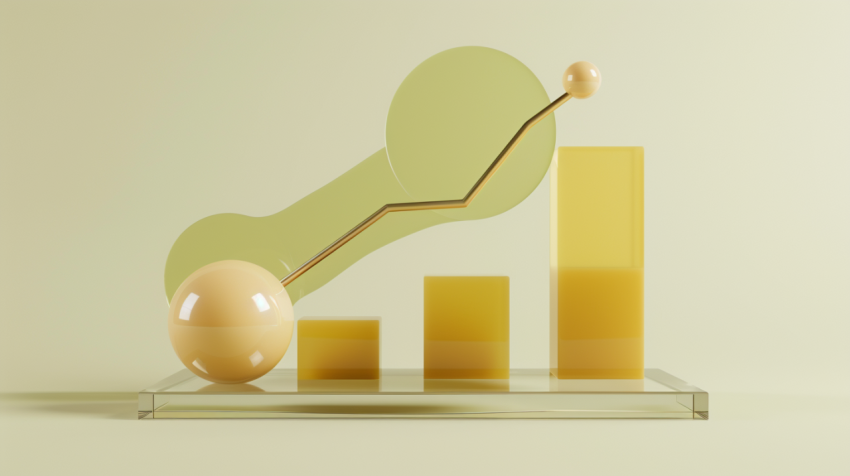

Unlocking Insights: A Practical Guide to Data Analytics
In today's data-driven world, analytics has become an indispensable tool for businesses, organizations, and even individuals. Data analytics is the process of examining large datasets to uncover hidden patterns, correlations, and other insights that can inform decision-making and drive better outcomes. This guide provides an overview of data analytics, including its types, tools, and applications.
Types of Data Analytics:
Data analytics can be broadly categorized into four main types:
-
Descriptive Analytics:
- Focus: What happened?
- Purpose: Summarizes past data to understand historical performance.
- Techniques: Data aggregation, data mining, reporting, dashboards.
- Examples: Analyzing website traffic, tracking sales revenue, reporting on customer demographics.
-
Diagnostic Analytics:
- Focus: Why did it happen?
- Purpose: Investigates the root causes of past events or performance.
- Techniques: Drill-down, data discovery, correlations, statistical analysis.
- Examples: Identifying factors contributing to a decline in sales, diagnosing the cause of website downtime, analyzing customer churn.
-
Predictive Analytics:
- Focus: What will happen?
- Purpose: Uses historical data and statistical models to forecast future outcomes.
- Techniques: Machine learning, regression analysis, time series analysis, forecasting.
- Examples: Predicting future sales, forecasting customer demand, assessing risk.
-
Prescriptive Analytics:
- Focus: What should be done?
- Purpose: Recommends actions to optimize future outcomes based on predictive models.
- Techniques: Optimization, simulation, decision rules, machine learning.
- Examples: Recommending pricing strategies, optimizing supply chain logistics, personalizing marketing campaigns.
Popular Data Analytics Tools:
A wide range of tools are available for performing data analytics, from spreadsheets to sophisticated software platforms:
- Microsoft Excel: A versatile tool for basic data analysis, including data cleaning, manipulation, and visualization.
- Tableau: A powerful data visualization tool that allows users to create interactive dashboards and reports.
- Power BI: A business analytics service from Microsoft that provides interactive visualizations and business intelligence capabilities.
- Python: A popular programming language for data analysis, with libraries like Pandas, NumPy, and Scikit-learn.
- R: A statistical programming language widely used for data analysis and visualization.
- SQL: A database query language used to extract and manipulate data from relational databases.
- SAS: A software suite for advanced analytics, business intelligence, and data management.
- Apache Spark: An open-source, distributed computing system used for large-scale data processing and analytics.
Applications of Data Analytics Across Industries:
Data analytics is transforming various industries, including:
- Retail: Optimizing pricing, personalizing recommendations, managing inventory, and improving customer segmentation.
- Finance: Detecting fraud, assessing risk, managing investments, and automating loan approvals.
- Healthcare: Improving patient care, optimizing hospital operations, predicting disease outbreaks, and personalizing treatment plans.
- Manufacturing: Optimizing production processes, predicting equipment failures, and improving supply chain efficiency.
- Marketing: Targeting advertising campaigns, measuring marketing ROI, analyzing customer sentiment, and personalizing customer experiences.
- E-commerce: Recommending products, optimizing website design, detecting fraudulent transactions, and personalizing the shopping experience.
The Data Analytics Process:
A typical data analytics process involves the following steps:
- Define the Problem: Clearly articulate the business question or problem you are trying to solve.
- Data Collection: Gather relevant data from various sources.
- Data Cleaning: Clean and prepare the data by handling missing values, outliers, and inconsistencies.
- Data Exploration and Analysis: Explore the data using various analytical techniques to identify patterns and insights.
- Model Building (for predictive and prescriptive analytics): Develop statistical or machine learning models to predict future outcomes or recommend actions.
- Interpretation and Communication: Interpret the results and communicate them effectively to stakeholders using visualizations and reports.
- Implementation and Monitoring: Implement the insights and monitor the results to ensure they are achieving the desired outcomes.
Conclusion:
Data analytics is a powerful tool for unlocking insights from data and driving better decision-making. By understanding the different types of analytics, the tools available, and the applications across industries, businesses and individuals can leverage the power of data to achieve their goals and gain a competitive edge. As the volume of data continues to grow, the importance of data analytics will only increase in the years to come.
data analytics, business analytics, data analysis, types of data analytics, descriptive analytics, diagnostic analytics, predictive analytics, prescriptive analytics, data analytics tools, data visualization, big data, machine learning, data mining, statistical analysis, data science, business intelligence, data-driven decision making, analytics process, data cleaning, data modeling, analytics applications, analytics examples, how to learn data analytics, what is data analytics used for, data analyst skills, top data analytics tools.

